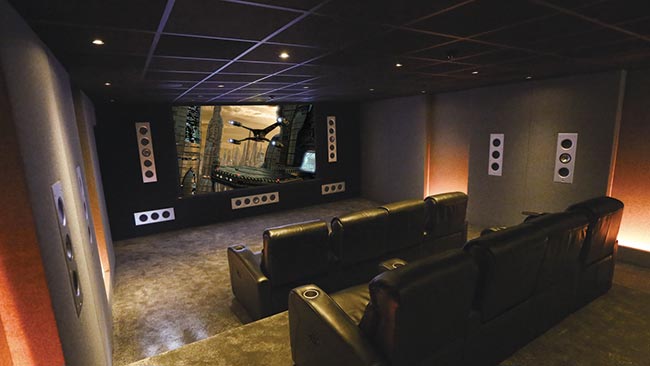Viewing films in your living room has transformed from a ordinary pastime into an encompassing experience that competes with the thrill of a commercial cinema. With improvements in technology, creating a personalized home theater has turned into easier than it has ever been. Whether you are a film lover seeking to replicate the big screen experience, or someone who enjoys to experience family movie nights in a cozy atmosphere, understanding how to create a home cinema is crucial.
In this definitive guide to home cinema installation, we will discuss everything you should to know prior to diving into your project. From the vital components to think about, like picking the right projector and sound system, to layout advice that enhance both acoustics and aesthetics, we will examine all aspects. We will also talk about whether you should handle the installation yourself or engage professionals, and offer insights into how to change any room, regardless of size, into a stunning theater. Let this adventure into audio and vision encourage you to create the ideal cinematic environment tailored to your needs.
Crucial House Theater Elements

Creating a remarkable home cinema requires meticulous picking of key components that operate as a team to deliver a superior viewing and audio experience. A premium projector or oversized television sits at the core of your setup, offering the sharp images essential to immerse you in your beloved films. When selecting a projector, consider factors like picture quality, brightness, and the size of the screen space to confirm the best possible performance. For televisions, search for models that offer 4K or even 8K to capitalize on the newest content available.
Audio is just as crucial in a home cinema system. A surround sound system elevates the audio experience, making you feel like you're part in the movie. There are various options available, from sound bars to full 7.1 or even 9.2 speaker systems. The decision will be based on your room size, layout, and personal preference. Always aim for a surround sound setup that enhances your visual display, as the combination between sound and image is what makes cinema authentically immersive.
Lastly, the seating in your home cinema is of utmost importance. Comfortable seating is crucial for long viewing sessions, so consider cinema-style chairs or recliners that allow for maximum positioning and comfort. Ensure that the configuration promotes a good line of sight to the screen while ensuring good acoustics within the room. The ideal seating combined with your audio and visual components can transform your space into a genuine cinema experience.
Home Cinema Design and Setup Tips
When designing a home theater, the perfect room layout is key for improving the viewing experience. Aim for a long room, where the screen is placed on the narrower wall to allow for best seating distances. A frequent recommendation is to place seating at least 1.5x the diagonal size of the screen for full HD and shorter for 4K displays. Arrange seats in tiers if possible to avoid obstructions and ensure an interrupted view for all viewers.
Acoustic treatments play a crucial role in enhancing sound quality. To enrich your home cinema's acoustics, consider adding soundproof panels, carpets, and curtains that can dampen sound waves and reduce echo. Carefully placed sound-absorbing materials can help create a more captivating audio experience, making it simpler to enjoy dialogue and soft sound effects. It's also essential to avoid placing large, hard surfaces directly facing where you will be seating, as this can create problematic sound reflections.
Illumination is another vital aspect of setting the proper atmosphere for film screenings. Utilize https://homecinemashertfordshire.co.uk/ of ambient and task lighting, such as adjustable ceiling lights and sconces. Consider installing darkening curtains to regulate outside light and prevent glare on the screen. Intelligent lighting systems can enhance the experience; for instance, they can be programmed to dim automatically when the movie starts, creating a true theater ambiance without distractions.
### Upkeep and Enhancements
Routine upkeep is crucial to keep your theater setup operating at its best. This includes maintaining your audio-visual equipment, verifying connections, and making sure that all components are functioning properly. Dust can accumulate in devices over time, affecting performance and potentially leading to overheating. It is advised to set up regular inspections and cleanings to improve durability and sound quality, which can be conducted at home or by professional services.
When it comes to upgrades, technology is always evolving, and keeping your home theater system current can greatly improve your viewing experience. Consider investing in higher resolution displays, such as 4K or 8K projectors, to take full advantage of the latest media formats. Additionally, upgrading to newer surround sound systems can provide a deeper audio experience. Be mindful of the advancements in streaming solutions and smart home integration, which can also enhance convenience and connectivity in your theater system.
Lastly, it's wise to stay informed about typical issues that may arise in home theater systems. Knowing how to troubleshoot problems can save you time and money. Make sure to consult manuals and use online guides for help. If problems persist, having a reliable installer or technician you can call for support can be invaluable, ensuring that your cinema remains in peak condition for all your movie nights.
